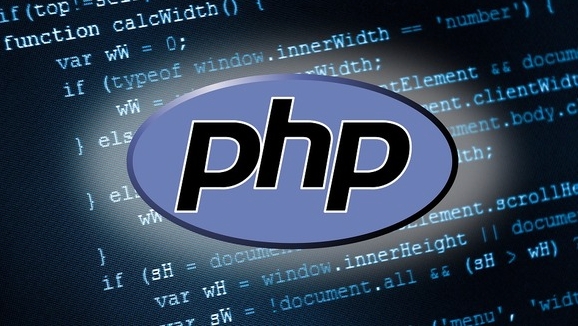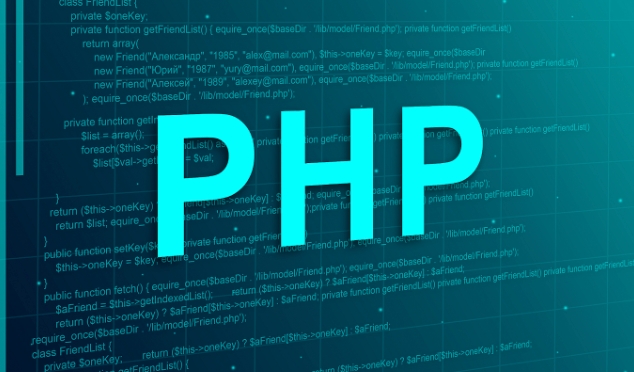To run PHP scripts locally, 1. First install the PHP environment. Windows can use XAMPP or configure environment variables. macOS/Linux can be installed with brew/apt/yum; 2. Directly execute the php test.php test script through the command line; 3. If you need to access the browser, you can use php -S to start the built-in server or use XAMPP to build a complete environment; 4. Pay attention to path, version differences, error prompt settings and file encoding issues. Follow the steps to run the PHP script smoothly.

It is not difficult to run PHP scripts locally. Just prepare the right environment and execute it directly like running other scripts.

Install PHP environment
To run a PHP script, you must first install PHP locally. Windows, macOS, and Linux all support PHP, but the installation method is slightly different.

- Windows : You can use integrated environments such as XAMPP and WAMP, or you can download PHP and configure environment variables separately.
- macOS/Linux : Usually installed using the command line, for example, if you use Homebrew to enter
brew install php, Linux can be installed using apt or yum.
After the installation is completed, enter php -v to view the version number to confirm whether the installation is successful.
Run PHP scripts using the command line
This is the easiest way to test and develop small features.

- Create a new
.phpfile, such astest.php, and write simple code:<?php echo "Hello, world!"; ?>
- Open the terminal or command line tool and enter the directory where the file is located.
- Enter
php test.php, and if everything is OK, it will outputHello, world!
This method does not rely on the web server, only runs the script itself, which is suitable for debugging functions, algorithms, etc.
Build a local server to run PHP
If your script needs to be accessed through a browser (for example, involving HTML form submission), you need to start the local server.
The easiest way is to use PHP's built-in development server. Run in the project directory:
php -S localhost:8000
Then open the browser and visit
http://localhost:8000/test.phpto see the effect.If you need a more complete environment (such as connecting to a database), it is recommended to use XAMPP or MAMP. Put the PHP file in the
htdocsdirectory, start Apache and access it throughhttp://localhost/yourfile.php.- Path problem : When including files (such as
include 'config.php'), pay attention to the difference between relative and absolute paths. - PHP version differences : Different versions may support certain functions differently, especially old projects may make mistakes.
- Error prompts are turned off by default : Sometimes the page is blank because the error prompt is not turned on. You can set
display_errors = Oninphp.inito view the specific error report. - File encoding and format : Save as UTF-8 and has no BOM format, otherwise it may cause header errors.
Notes and FAQs
Some details are easily overlooked, causing the script to fail to run:
Basically that's it. It is not complicated to operate, but some details are easy to be overlooked, especially when novices build it for the first time. After getting familiar with it, running a PHP script is as convenient as writing a Python script.
The above is the detailed content of How to run PHP scripts locally?. For more information, please follow other related articles on the PHP Chinese website!

Hot AI Tools

Undress AI Tool
Undress images for free

Undresser.AI Undress
AI-powered app for creating realistic nude photos

AI Clothes Remover
Online AI tool for removing clothes from photos.

Clothoff.io
AI clothes remover

Video Face Swap
Swap faces in any video effortlessly with our completely free AI face swap tool!

Hot Article

Hot Tools

Notepad++7.3.1
Easy-to-use and free code editor

SublimeText3 Chinese version
Chinese version, very easy to use

Zend Studio 13.0.1
Powerful PHP integrated development environment

Dreamweaver CS6
Visual web development tools

SublimeText3 Mac version
God-level code editing software (SublimeText3)
 PHP Variable Scope Explained
Jul 17, 2025 am 04:16 AM
PHP Variable Scope Explained
Jul 17, 2025 am 04:16 AM
Common problems and solutions for PHP variable scope include: 1. The global variable cannot be accessed within the function, and it needs to be passed in using the global keyword or parameter; 2. The static variable is declared with static, and it is only initialized once and the value is maintained between multiple calls; 3. Hyperglobal variables such as $_GET and $_POST can be used directly in any scope, but you need to pay attention to safe filtering; 4. Anonymous functions need to introduce parent scope variables through the use keyword, and when modifying external variables, you need to pass a reference. Mastering these rules can help avoid errors and improve code stability.
 How to handle File Uploads securely in PHP?
Jul 08, 2025 am 02:37 AM
How to handle File Uploads securely in PHP?
Jul 08, 2025 am 02:37 AM
To safely handle PHP file uploads, you need to verify the source and type, control the file name and path, set server restrictions, and process media files twice. 1. Verify the upload source to prevent CSRF through token and detect the real MIME type through finfo_file using whitelist control; 2. Rename the file to a random string and determine the extension to store it in a non-Web directory according to the detection type; 3. PHP configuration limits the upload size and temporary directory Nginx/Apache prohibits access to the upload directory; 4. The GD library resaves the pictures to clear potential malicious data.
 Commenting Out Code in PHP
Jul 18, 2025 am 04:57 AM
Commenting Out Code in PHP
Jul 18, 2025 am 04:57 AM
There are three common methods for PHP comment code: 1. Use // or # to block one line of code, and it is recommended to use //; 2. Use /.../ to wrap code blocks with multiple lines, which cannot be nested but can be crossed; 3. Combination skills comments such as using /if(){}/ to control logic blocks, or to improve efficiency with editor shortcut keys, you should pay attention to closing symbols and avoid nesting when using them.
 How Do Generators Work in PHP?
Jul 11, 2025 am 03:12 AM
How Do Generators Work in PHP?
Jul 11, 2025 am 03:12 AM
AgeneratorinPHPisamemory-efficientwaytoiterateoverlargedatasetsbyyieldingvaluesoneatatimeinsteadofreturningthemallatonce.1.Generatorsusetheyieldkeywordtoproducevaluesondemand,reducingmemoryusage.2.Theyareusefulforhandlingbigloops,readinglargefiles,or
 Tips for Writing PHP Comments
Jul 18, 2025 am 04:51 AM
Tips for Writing PHP Comments
Jul 18, 2025 am 04:51 AM
The key to writing PHP comments is to clarify the purpose and specifications. Comments should explain "why" rather than "what was done", avoiding redundancy or too simplicity. 1. Use a unified format, such as docblock (/*/) for class and method descriptions to improve readability and tool compatibility; 2. Emphasize the reasons behind the logic, such as why JS jumps need to be output manually; 3. Add an overview description before complex code, describe the process in steps, and help understand the overall idea; 4. Use TODO and FIXME rationally to mark to-do items and problems to facilitate subsequent tracking and collaboration. Good annotations can reduce communication costs and improve code maintenance efficiency.
 Learning PHP: A Beginner's Guide
Jul 18, 2025 am 04:54 AM
Learning PHP: A Beginner's Guide
Jul 18, 2025 am 04:54 AM
TolearnPHPeffectively,startbysettingupalocalserverenvironmentusingtoolslikeXAMPPandacodeeditorlikeVSCode.1)InstallXAMPPforApache,MySQL,andPHP.2)Useacodeeditorforsyntaxsupport.3)TestyoursetupwithasimplePHPfile.Next,learnPHPbasicsincludingvariables,ech
 How to access a character in a string by index in PHP
Jul 12, 2025 am 03:15 AM
How to access a character in a string by index in PHP
Jul 12, 2025 am 03:15 AM
In PHP, you can use square brackets or curly braces to obtain string specific index characters, but square brackets are recommended; the index starts from 0, and the access outside the range returns a null value and cannot be assigned a value; mb_substr is required to handle multi-byte characters. For example: $str="hello";echo$str[0]; output h; and Chinese characters such as mb_substr($str,1,1) need to obtain the correct result; in actual applications, the length of the string should be checked before looping, dynamic strings need to be verified for validity, and multilingual projects recommend using multi-byte security functions uniformly.
 Quick PHP Installation Tutorial
Jul 18, 2025 am 04:52 AM
Quick PHP Installation Tutorial
Jul 18, 2025 am 04:52 AM
ToinstallPHPquickly,useXAMPPonWindowsorHomebrewonmacOS.1.OnWindows,downloadandinstallXAMPP,selectcomponents,startApache,andplacefilesinhtdocs.2.Alternatively,manuallyinstallPHPfromphp.netandsetupaserverlikeApache.3.OnmacOS,installHomebrew,thenrun'bre






